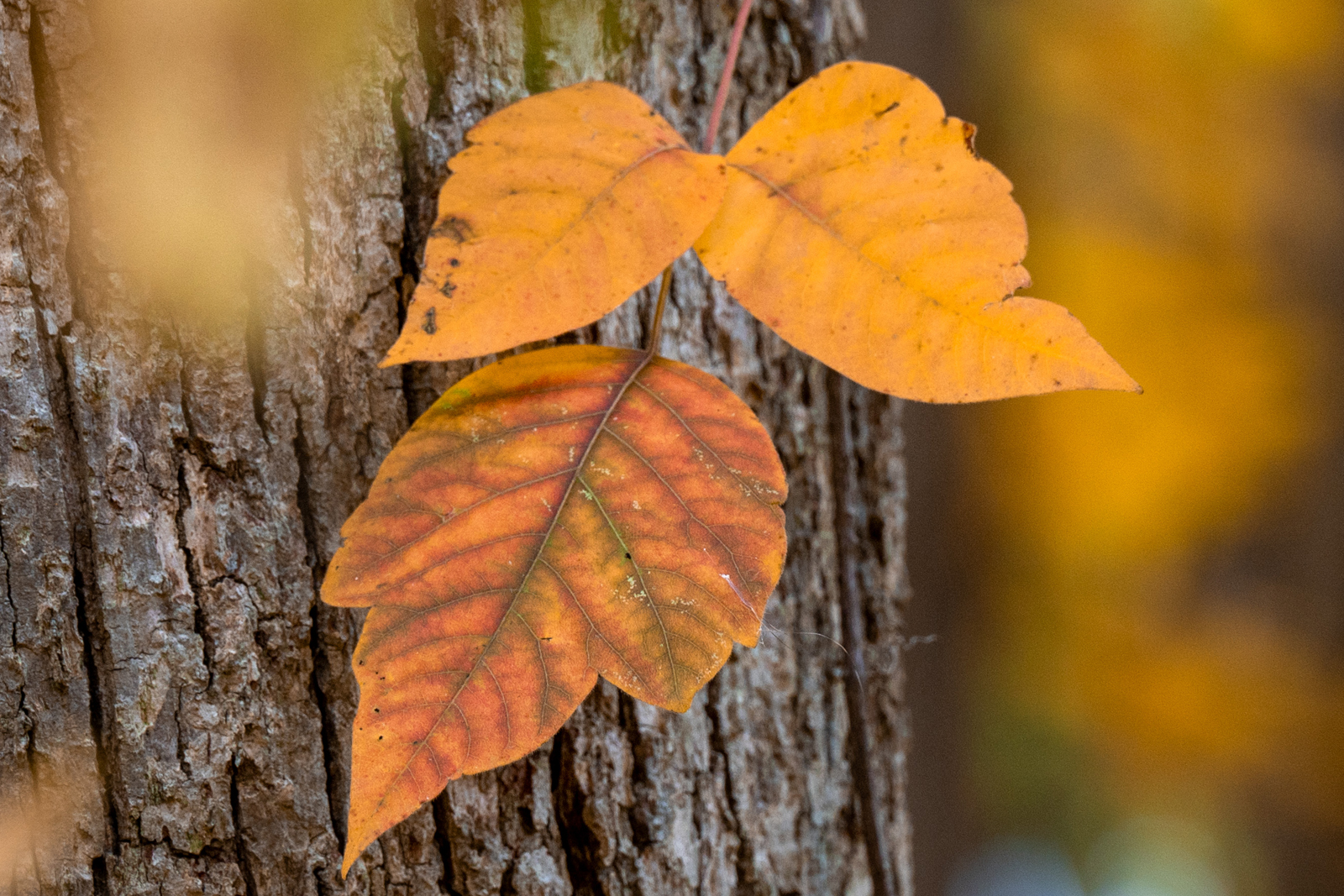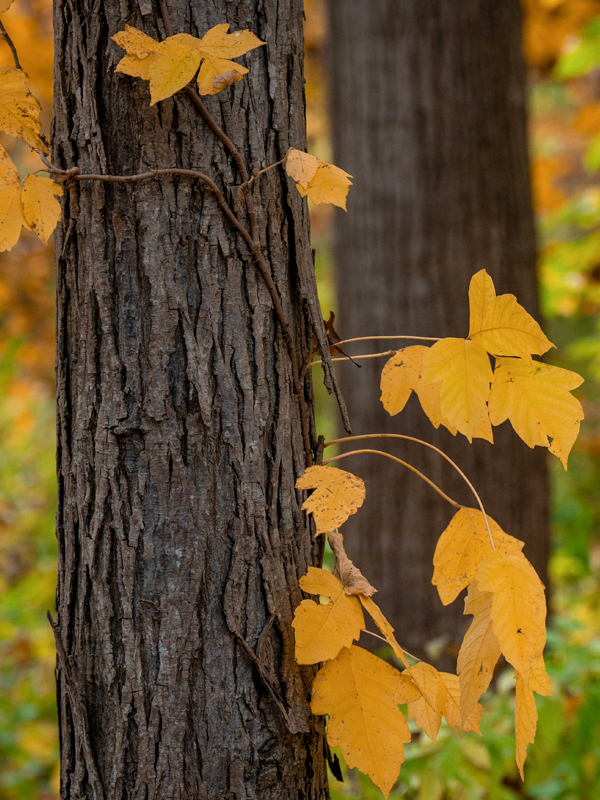A misunderstood plant flaunts its fall beauty.

Mention poison ivy and you will hear a few choice words.
But come fall, poison ivy practically begs us to love it. Its leaves are some of the first to turn colors, from green to brilliant shades of red, yellow, and orange.
If you spot its vibrant fall beauty on a Chicago Botanic Garden trail, don’t be fooled. Poison ivy is toxic all year round, and you could still get a rash from exposure to it. Like thorns on roses, poison ivy is communicating with us, said Matt Evans, managing ecologist, woodlands.
“Poison ivy thrives best when fewer animals eat and trample it, and it has figured out how to make sure there is less disturbance to it by teaching people, microbes, fungi, and most animals—although deer eat it—that there would be a cost to interfering with its mission,” Evans said. “Learning to listen and coexist with plants natural to our landscape is one of poison ivy's lessons. Thankfully, there are few toxic plants to touch in our native flora, poison ivy is by far the most common."

How to identify poison ivy
Poison ivy takes many forms, so it is important for hikers, gardeners, and anyone who enjoys the outdoors to become familiar with its characteristics in all seasons. It can grow as a sprawling ground cover, a woody shrub, or a woody vine climbing fences, trees, telephone poles, or even buildings in more rural areas.
Urushiol, the resin responsible for producing allergic reactions in people, is present in every part of the plant. Rashes can appear minutes or days after exposure. People may also experience allergic reactions if exposed to fumes from burning the plant. It does not, however, bother other animals.
Poison ivy leaves vary a little from plant to plant, but once you get to know the basic shape it is unmistakable. First notice the characteristic three leaflets that remind us “Don’t Touch Me!”
Now look at how the top leaflet is symmetrical and attached to the main stem by a short, thinner stem called a petiole. The lower leaflets have thumb-like lobes that point away from the top leaf. These leaves attach to the stem at their base.
The Garden makes every effort to remove poison ivy from edges of trails, so fear not. Stay on the paths, learn to recognize it, and you have nothing to worry about.

